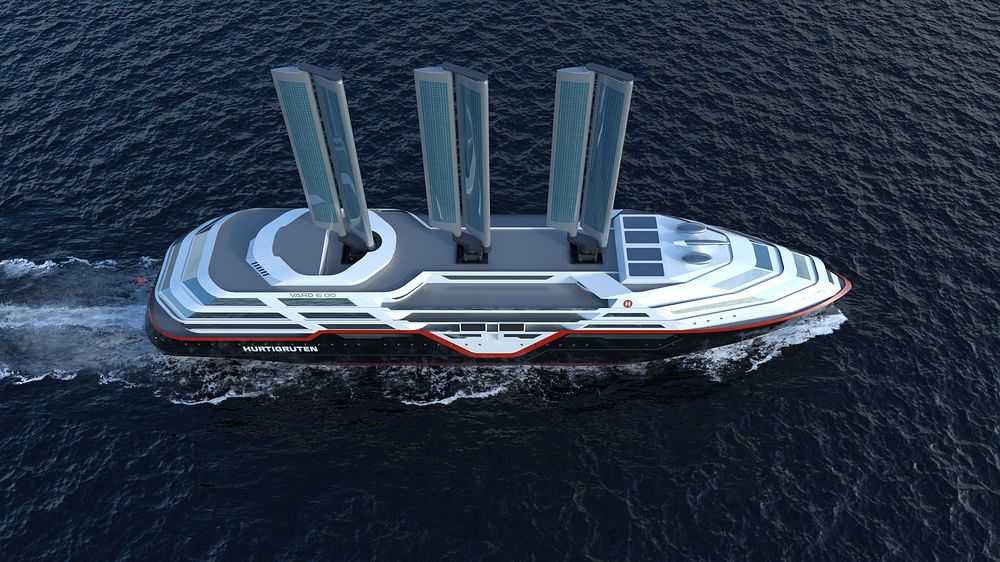Where travel agents earn, learn and save!
News / Hurtigruten reveals updated plans for its zero-emission cruise ship of the future
The ship is projected to reduce energy consumption by 40-50% and operate entirely emission-free under normal conditions

Photo: Rendering of the updated Sea Zero ship by Vard
Hurtigruten, one of the leading sustainable brands in travel, has released its updated plans for its Sea Zero project, the zero-emission ship scheduled to debut in 2030, as it is in its research and development phase. With the help of large batteries, sails, and other innovative solutions, the ship will be able to sail entirely emission-free during normal operation, while energy consumption could be reduced by 40-50%.

Rendering by Vard.
Hurtigruten initially announced its Sea Zero project in October 2022, and then unveiled its first set of renderings in summer 2023. As the research and development phase has continued since, a second version of renderings are now released and plans are even more advanced. It was developed in the Norwegian city of Ålesund by Vard, one of Hurtigruten’s key partners in the Sea Zero project, and integrates several innovative solutions created in collaboration with partners from the Norwegian maritime industry.
Sea Zero is one of several industry-leading projects from Hurtigruten that focuses on sustainable travel and industry solutions. Earlier this year, the cruise liner announced its initiative aiming to reduce edible food waste to zero. The company is currently also going through a major 100 million Euro upgrade of its fleet that includes several ships becoming battery-hybrid-powered and state-of-the-art technology that will significantly reduce both CO2 and Nitrogen oxides (NOx) emissions by 25% and 80%, respectively.
Calculations show that the ship will use about 40-50% less energy than today’s ships, which makes it possible to operate primarily on batteries as the main energy source.
Sails that can be raised and lowered
One of the most exciting elements is the sails, which can be raised and lowered as needed. Preliminary estimates indicate that the sails could reduce energy consumption by around 10% over time. Additionally, solar panels will contribute another 2-3% in energy savings.
The type of sail being investigated is called OceanWings. These French-developed sails are already in use on the cargo ship Canopée.
Technically advanced
The ship is planned with contra-rotating propellers as the main propulsion, and the batteries will have a capacity of around 60 megawatt-hours. Two retractable thrusters at the stern will ensure optimal maneuvering during port operations and provide increased safety through redundancy.
Another measure is air lubrication of the hull, where air bubbles are pumped beneath the hull to reduce drag. This can provide energy savings of 5-10%. Combined with modern hull design, advanced anti-fouling coatings, and regular hull cleaning, water resistance can be significantly reduced. Preliminary results also show that better ventilation and insulation systems, as well as advanced energy management, can lead to significant energy savings.
So-called “smart cabins” will allow guests to control their own energy usage. Guests would be able to control heating and ventilation through an app and a screen in the cabin, while also seeing how much energy is being used. This will increase guests' awareness of sustainability.











